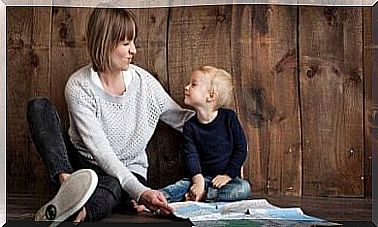Family Self-sacrifice
Self-sacrifice within the family is the order of the day for some. The members are taught that they must make sacrifices for the sake of the family. They promote the idea that one’s own needs and desires should come second. The rest of the family — and the family as a whole — takes precedence.
The relational principles within these types of families follow the law that demands self-sacrifice in exchange for acceptance. In other words, you are forced to put other people’s needs above your own in order not to become a black sheep. The affection and other benefits your family provides you depend on your life being a continuous series of obligations.
Who is responsible for self-sacrifice
We see this kind of behavior mainly in parents. They transform themselves (in a sense) into martyrs. The behavior they display comes from the expectation that it is best for their children. After all, the needs expressed by children guide the education they enjoy.
As the family expands and this idea of self-sacrifice matures further, the next generations adopt this mindset. In this way, all members of subsequent generations are made responsible for taking care of the family. Then one expects a life of sacrifice and surrender in favor of the others.

When the parents make the sacrifices
When the parents are still the ones sacrificing themselves, their children may feel drawn to give a new spin on their lives. They rebel in thought, word and deed. In doing so, they try to look at their relationships with their parents from a healthier perspective.
So just as Giorgio Nardone – an Italian psychologist and psychotherapist – says: ” D e children beg their parents for more fun things to do, to plan trips, to travel … but the parents know they have no choice to be here. If the child likes to dress in the latest fashion, want to study, have his own car, and so on, then the parents have to make sacrifices. They omit many things to achieve this.”
We can see that their view of the world and family revolves around a specific idea. That idea is then as follows: always put other people’s needs and desires first. They consider this an essential part of the process to ensure stability and acceptance of the family.

Notable dynamics
Other (stereo)typical family members who are quick to sacrifice themselves fall into the category of ‘pathological altruists’ or ‘pathological narcissists.’ The two often act in pairs, with the former deriving satisfaction from helping others, and the latter in turn deriving satisfaction from the sacrifices made by the other. Each member of this duo plays their own role and can resort to self-sacrifice to gain (or keep) control over the relationship.
However, this is not the only example we can give. There are duos that are just as disturbing. This creates a battle within some families over who can sacrifice the most. The sacrifice revolves around achieving a final, external goal. That is, something that has nothing to do with the dynamics between two people mentioned above. Think of buying a house, for example (who works the hardest for the money for this, who puts the most time into it even if they are already short of time, and so on). They come up with the perfect excuse to avoid enjoying the present moment. The purpose of this is to increase possible satisfaction in the future.
Either way, the relational patterns are naturally negative. After all, they neglect the importance of self-love and healthy self-confidence.
‘Sacrifice’ and ‘I should…’ define a lifestyle
In the most extreme cases, there are a few words that often crop up. Consider “sacrifice” and “should.” These often leave a permanent impression on a person’s life and the philosophy he follows. When the “pathological altruist” is a parent, the child (the “pathological narcissist”) is forced to seize whatever he can get his hands on. Giorgio Nardone says:
This is a recognizable type of personality pattern and is often exhausting. In some cases, people who have grown up in the environment mentioned above have difficulty accepting their need for return (from another). This is because they have learned not to prioritize their own needs and desires.
The negativity that self-sacrifice brings
You often hear people with this attitude say: “ You don’t know what I’ve sacrificed. If I hadn’t been there…” They appropriate the role of victim. Their lives are in fact a continuous interment; they are confined to a life where they always bury their own activities and interests.
In children who develop this kind of self-sacrifice for their family as a behavior pattern, it results in an inability to appreciate the present. Other people’s dreams become theirs too. They feel hopeless and have trouble getting to know themselves. That while this is so much needed to change such a situation!
Other people are desperately trying to get out of their stifling family environment. They can no longer handle the blackmail and the overwhelming worries. Still others are constantly looking for a way to change the situation instead of leaving it, or learn to deal (better) with the people involved, and so on.
It is important to learn to identify these relationship patterns within families where self-sacrifice plays a major role. That is the first step towards personal growth and setting priorities. Given the importance of this, it is certainly not a bad idea to reflect on this every day.









